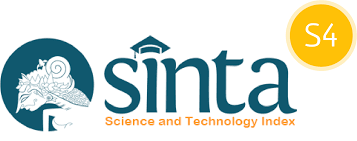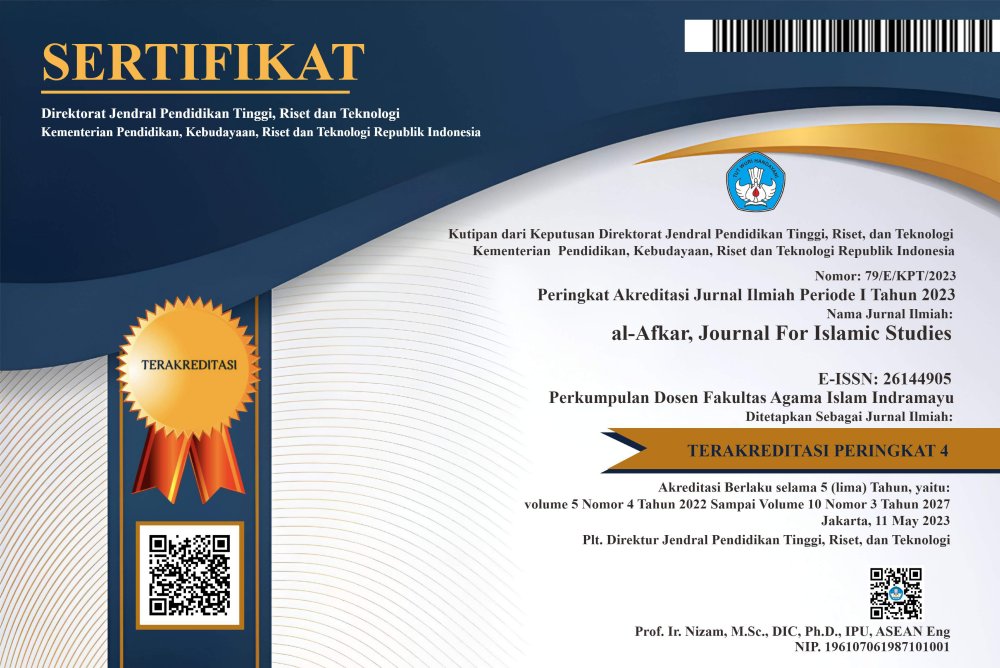The Effect of Musyarakah Contracts on Profitability at KSPPS BMT Mentari Bumi
DOI:
https://doi.org/10.31943/afkarjournal.v6i4.790Keywords:
Musyarakah, Profitability, Return on Assets, Return on EquityAbstract
To determine how musyarakah contracts affect the profitability (ROA and ROE) of KSPPS BMT Green Earth financial institutions, this study employs a quantitative method that correlates with secondary data extracted from their financial statements for the years 2020-2022. The analysis includes descriptive statistical tests, linear regression, correlation, and hypothesis testing. The results indicate that the musyarakah contract has a strong correlation with and can boost profitability. To demonstrate the importance of musyarakah contracts to a company's profitability, they have a significant impact on ROE, but not on ROA. This study is limited by its reliance on homogeneous sample data and its exclusive focus on the relationship between two profitability measures. In order to obtain a deeper understanding, future research should examine a more diverse sample and include additional variables.
Downloads
References
Arwani, A. (2016). Akuntansi Perbankan Syariah dari Teori ke Praktik. Yogyakarta: Deepublish.
BMT Mentari Bumi. (2023). Profil BMT Mentari Bumi. Diakses dari http://www.bmtmentaribumi.com, pada 5 April 2023.
Cohen, J. (1988). Statistical Power Analysis for the Behavioral Sciences. Lawrence Erlbaum Associates.
Ernawati, & Widyawati. (2017). Kajian Riset Akuntansi. Jakarta: Grasindo
Elasrag, H. (2016). Principle of Islamic Finance. Available at SSRN: https://ssrn.com/abstract=2750444
Evans, J.D. (1996). Straightforward Statistics for the Behavioral Sciences. Brooks/Cole Publishing.
Fatwa Dewan Syari’ah Nasional MUI No. 08/DSN-MUI/IV/2000 Pembiayaan Musyarakah
Field, A. (2013). Discovering Statistics Using IBM SPSS Statistics. SAGE Publications Ltd.
Hery. (2018). Analisis Laporan Keuangan. Jakarta: Grasindo.
Hutcheson, G. & Sofroniou, N. (1999). The Multivariate Social Scientist: Introductory Statistics Using Generalized Linear Models. Sage Publications.
James, G., Witten, D., Hastie, T., & Tibshirani, R. (2013). An Introduction to Statistical Learning. Springer.
Julianto, dkk. (2018). Buku Metode Penelitian Praktis. Sidoarjo: Zifatama Jawara.
Nalta, S., Wijaya, I., & Haris. (2018). Pengaruh Pembiayaan Mudharabah dan Musyarakah Terhadap Return On Equity pada PT. Bank Pembiayaan Rakyat Syariah di Indonesia. el-Amwal, Vol. 1, No. 2.
Nurhayati, S. (2015). Akuntansi Syariah di Indonesia. Jakarta: Salemba Empat
Pallant, J. (2013). SPSS Survival Manual. Open University Press.
Pearl, J. (2016). Causal inference in statistics: An overview. Statistics Surveys, 3, 96-146.
Purwaningih, M., & Sudrajat, M.A, (2021). Pengaruh Pembiayaan Mudharabah, Murabahah dan Musyarakah Terhadap Profitabilitas Bank Umum Syariah di Indonesia. SIMBA: Seminar Inovasi, Manajemen, Bisnis dan Akuntansi. Vol. 2, No. 1.
Rahman, T. (2021). Buku Ajar Fiqih Muamalah Kontenporer. Lamongan: Academia Publication
Rambe, I. & Kusmilawaty. (2022). Akuntansi Syariah (Teori Dasar dan Implementasinya). Medan: UMSU Press
Septiana, A. (2019). Analisis Laporan Keuangan. Pamekasan: Duta Media Publishing.
Sudana, I.M. (2012). Manajemen Keuangan Perusahaan Teori & Praktik. Jakarta: Erlangga.
Sugiyono. (2014). Metode Penelitian Kuantitatif, Kualitatif dan R&D. Bandung: Alfabeta
Sutrisno. (2017). Manajemen Keuangan Teori, Konsep dan Aplikasi, ed. Rev Yogyakarta: Ekonisia.
Syamsuddin, L. (2013). Manajemen Keuangan Perusahaan. Jakarta: Raja Grafindo Persada.
Wasilah, S. N. (2015). Akuntansi Syariah di Indonesia. Jakarta: Salemba Empat.
Yentisna, & Alvian, A. (2019). Pengaruh Pembiayaan Mudharabah dan Musyarakah Terhadap Tingkat Profitabilitas Pada Bank BNI Syariah Tahun 2015-2017. Menara Ilmu. Vol. 13, No. 2.
Downloads
Published
How to Cite
Issue
Section
License
Copyright (c) 2023 Oktafianus Yoga Tri Kusnandar, Isman

This work is licensed under a Creative Commons Attribution 4.0 International License.



















